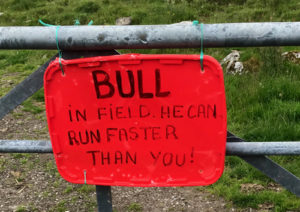
Office hours: Mon - Fri 09:00 - 17:30; Sat 09:30 - 13:00
Office hours: Mon - Fri 09:00 - 17:30; Sat 09:30 - 13:00
Office hours: East Coast USA: Mon - Fri 09:00 - 17:30 (04:00 - 12:30 local time); Sat 09:30 - 13:00 (04:30 - 08:00)
West Coast USA: Mon - Fri 09:00 -17:30 (01:00 - 09:30 local time); Sat 09:30 - 13:00 (01:30 - 05:00)
Office hours: Ottawa: Mon - Fri 09:00 - 17:30 (04:00 - 12:30 local time); Sat 09:30 - 13:00 (04:30 - 08:00)
Vancouver: Mon - Fri 09:00 - 17:30 (01:00 - 09:30 local time); Sat 09:30 - 13:00 (01:30 - 05:00)
Office hours: Canberra: Mon - Fri 09:00 - 17:30 (20:00 - 04:30 local time); Sat 09:30 - 13:00 (20:30 - 24:00)
Office hours: Mon - Fri 09:00 - 17:30 (22:00 - 06:30 local time); Sat 09:30 - 13:00 (22:30 - 02:00)
Office hours: Mon - Fri 09:00 - 17:30 (check internet for local time equivalent); Sat 09:30 - 13:00
Introduction
This travellers blog is where you will find many things - latest news, the musings of our experienced staff and much more. We plan also to use it as a pictorial knowledge. Let us know if you would like "how to" instructions and we will put them here.
Negotiating your way through the British countryside Back to News
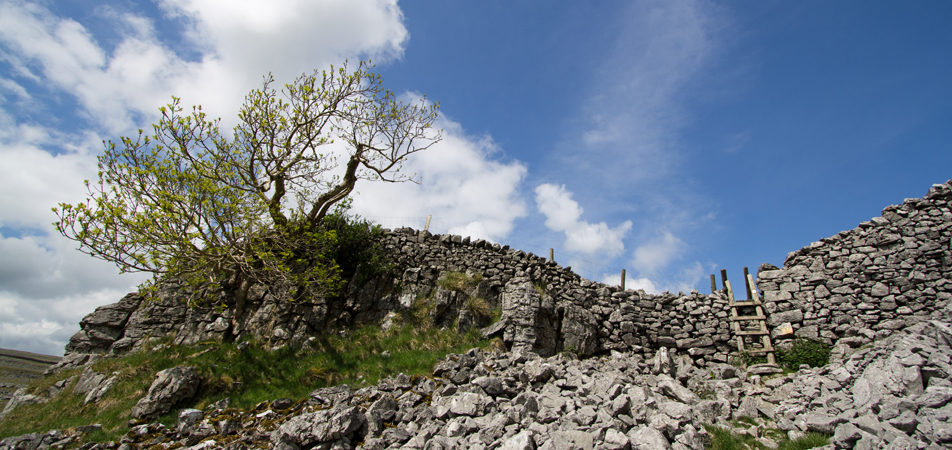
Monday 31st January | Posted by On Foot Staff
The patchwork patterns of fields that make up much of Britain’s farmland are among its most endearing features, but the hedges, walls and fences that mark them out can be a challenge to walkers. Over the centuries, farmers and landowners have developed some imaginative ways to solve the conundrum of allowing walkers through on a right of way without giving animals an opportunity to escape!
These gates and stiles are usually simple and universal in style, but sometimes more complex or characteristic of a region of the country, making for a wonderful variety of crossings that you will find along the footpaths. Here are some types that you’re likely to encounter when walking On Foot routes in England and Wales.
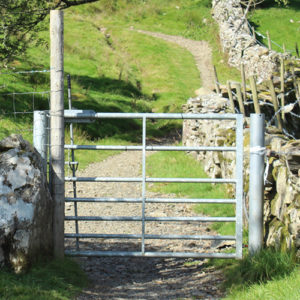
Pedestrian gate – of varying width and construction, these sometimes have a long, spring-loaded arm attached to the latch so that horse riders can open the gate without dismounting.
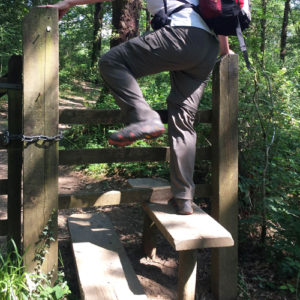
Stile (or step stile) – the most common way to cross a fence line and usually of wooden construction, sometimes with a helpful hatch at ground level for dogs.
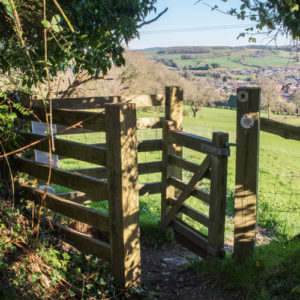
Kissing gate – a gate that swings freely across a V-shaped or D-shaped opening in the fence, just ‘kissing’ the post on either side. Easy for humans, but tricky for cattle. Of course, there are other theories behind the name, but whether you want to kiss your walking companion(s) each time you pass through a gate is up to you!
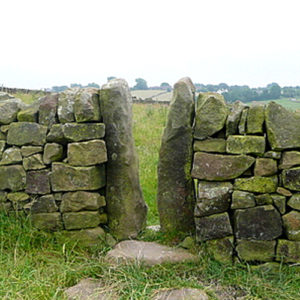
Squeeze stile – a narrow gap lined by two stone slabs or posts, sometimes v-shaped and sometimes with a small gate. More complex versions may have sides that can be pushed apart to widen the gap.

Ladder stile – a pair of wooden ladders up and over a dry-stone wall. They make a good spot to sit and rest for a moment too!
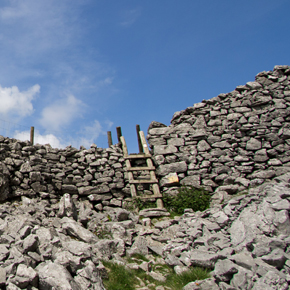
This is ‘Beggar’s Stile’ at the head of Crummack Dale (on Ingleborough Circuit in the Yorkshire Dales), which, unusually, is named on the Ordnance Survey map. The ladder is shorter on the far side, leading to the magnificent Thieves Moss – a natural amphitheatre hidden from the valley below that is likely to have got its name from its use for the sale of stolen sheep and cattle.
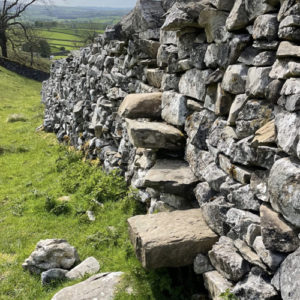
Stone stile – made of large slabs cantilevered on both sides of a stone wall. Need to be negotiated with care! In Wales the slabs are often rustically uneven, and you’ll need to step over the vertical stones on the top of the wall.
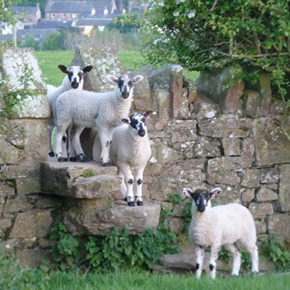
In Yorkshire, however, you’re more likely to find square-cut stones and a helpful gap in the top of the wall – which some of the nimbler sheep will manage to climb through.
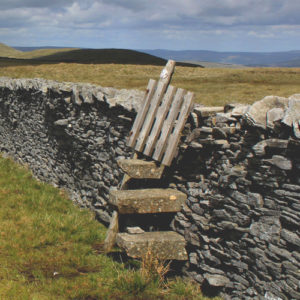
Hence the common addition of a small wooden gate, possibly spring-loaded so that it remains shut. This simple solution can catch you unawares – as On Foot’s Emma discovered when a gate swung shut and catapulted her from the top of the wall!
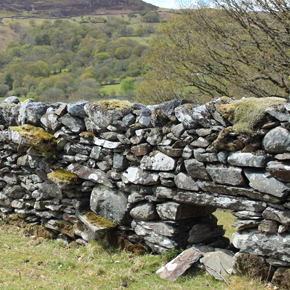
You may notice a ‘sheep creep’ near to a stone stile. This is a low gap for sheep to pass from one field to another without the need for a gate, but can easily be closed off when necessary. This one in North Wales is getting a little dilapidated…
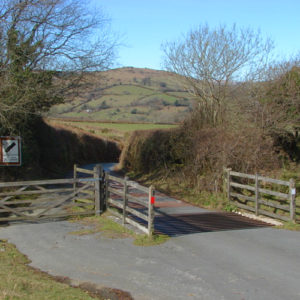
Cattle grid – found where a road passes from fields to unfenced pastures, this is a series of rails over a shallow pit which allows access for vehicles and walkers (with care!), but not animals. There’s usually a gate alongside, originally intended for horse-drawn traffic. It has been reported occasionally that sheep have learned to roll themselves across the grids.
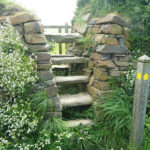
‘Cornish hedges’ are actually earth banks, often faced with stones and overgrown with bushes and other flora. There’s a multitude of designs of stiles in these hedges, usually made of long slabs of granite, laid in line with the direction of the hedge and stepped as necessary through a gap. Coffen stiles (horizontal at ground level) and cattle stiles (rising up and down) have spaces between the slabs to deter livestock, but which might be obscured by undergrowth.
Farmers are endlessly inventive, and you’ll probably spot many variations on these styles. On Foot’s Mary grew up on a farm in Wiltshire, and remembers her family’s ‘gap fillers’, which used up any unwanted bits of timber, metal and string to fill the gaps in hedgerows. You’ll also get accustomed when walking to dealing with fraying lengths of orange ‘baler twine’ holding gates shut with varying degrees of success.
And finally – if the sign encourages you to close the gate, make sure that you close the gate!